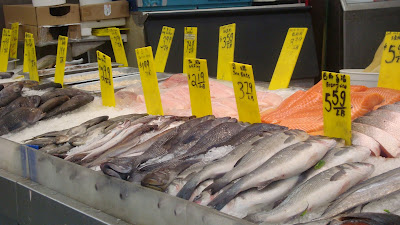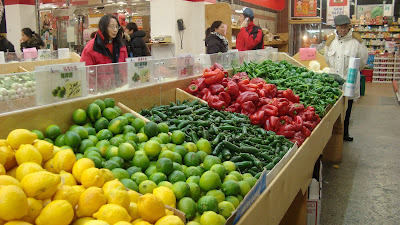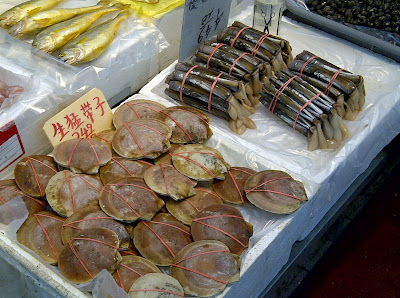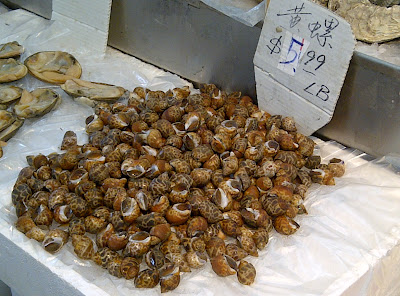The time I was a child was long enough ago that I still remember when there was no such thing as a grocery store in our suburban village in 1980s Manila. We had a refrigerator that worked but could not make ice nor keep ice cream frozen. It was a maroon White Westinghouse fridge that we go scolded for if we opened and closed it too often, and while we rarely had ice cream at home, the perk was that if someone did get an ice cream cake for his or her birthday, the whole thing had to be consumed on the spot.
The point of this reminiscing is the difference in cooking practices during that time. If I was home from school I would go with my nanny to the “wet” market in the morning for the evening’s meal. (It was really wet. We had to wear rain boots or soak our feet in rancid fish-washed mud.)
 |
| HK Supermarket’s Fish Section (no muddy feet here). |
This practice disappeared when “super” markets rolled into town. Suddenly there were industrial sized freezers for meat, refrigerated shelves for produce, and styrofoam tray-backed flash frozen fish from the closest port. We got a better fridge and shopped for a week’s worth of food at a time. (There was still no ice cream, but that’s another story.)
It’s not surprising in spite of these conveniences that many people still shop the old-fashioned way. They go to markets to see what’s in season and create a meal plan from there. At least in New York and other Chinatowns in the US, there is still a market for fresh-for-the-day produce, meat and fish. You may still get fruit, vegetables, and seafood for a fraction of its normal cost – but don’t expect it to last. Don’t expect it to be pretty either. A lot of Chinatown’s markets are on the street or in tiny run-down stalls where an elderly gentleman gently prods you to take for cheaper a quantity much more than you will need.

For the shopper who has only recently discovered Chinatown delights, it would be refreshing to learn that establishments like Hong Kong Supermarket provide the medium in between street market shopping and a controlled supermarket environment where everything is organized and stored as opposed to the supplier-to-street system employed by sidewalk vendors.
Of course, some markup is inevitable. But since supply is great and demand even greater,inventory flies fast enough to maintain a cost comparable to other vendors, but with the convenience of a one-stop shop.
Hong Kong Supermarket (with branches in Sunset Park, Brooklyn and Elizabeth street in Manhattan) not only has competent produce and meat sections, it also boasts aisles of common Asian dry goods including many Filipino staples such as toyo, suka, tuyo, dried mangoes and Nata de Coco.
What more do you need? As an acquaintance often said, “Can’t complain a lick!”

The meat section. This is where I can reliably get slabs of
pork belly, and only at $2.39/lb.
The vegetable section is large and complete as far as most Asian kitchens’ standards.
In this picture we can see Chinese cabbage, mustard greens, scallions, leeks, lettuce, mushrooms, been sprouts, broccoli and celery.
This sells for about $3 apiece at Fresh Direct. Here it is $1.99 a pound.
This must be the most diverse mushroom section I’ve seen, although they do not have the exotic specialty mushrooms, you have most of what you would commonly need.
Fresh sea scallops and razor clams.
Escargot, anyone?
We must not leave out photos of our friends:
Live eels
Soft shell turtles
Frogs



